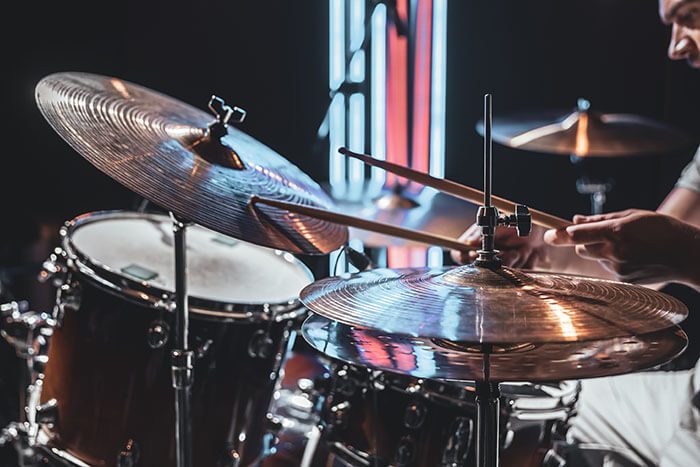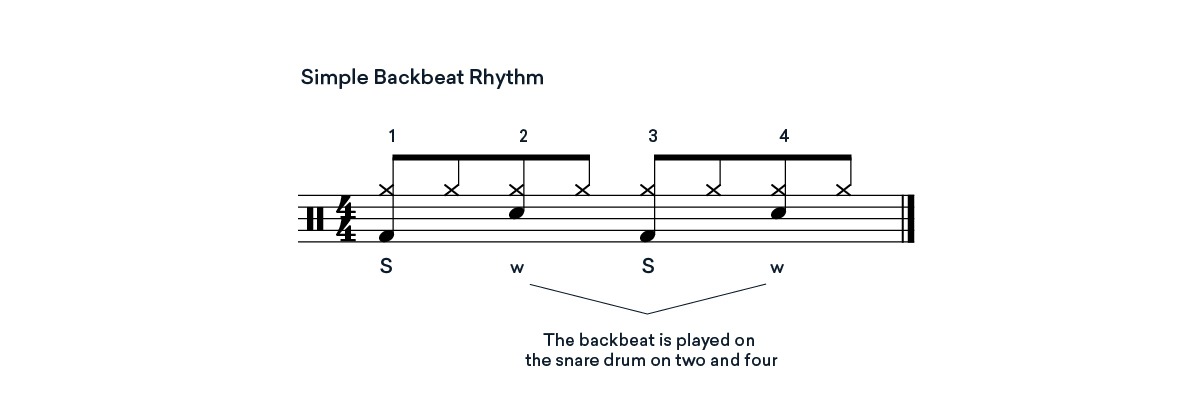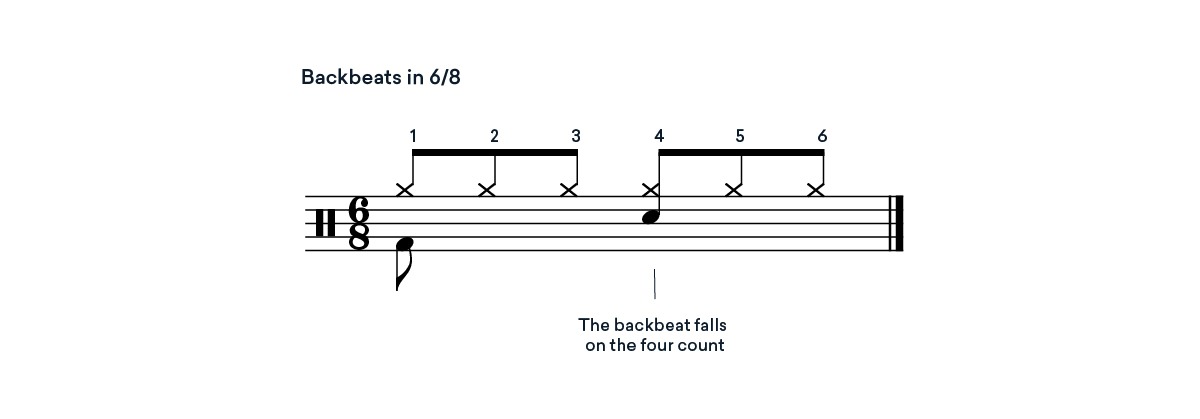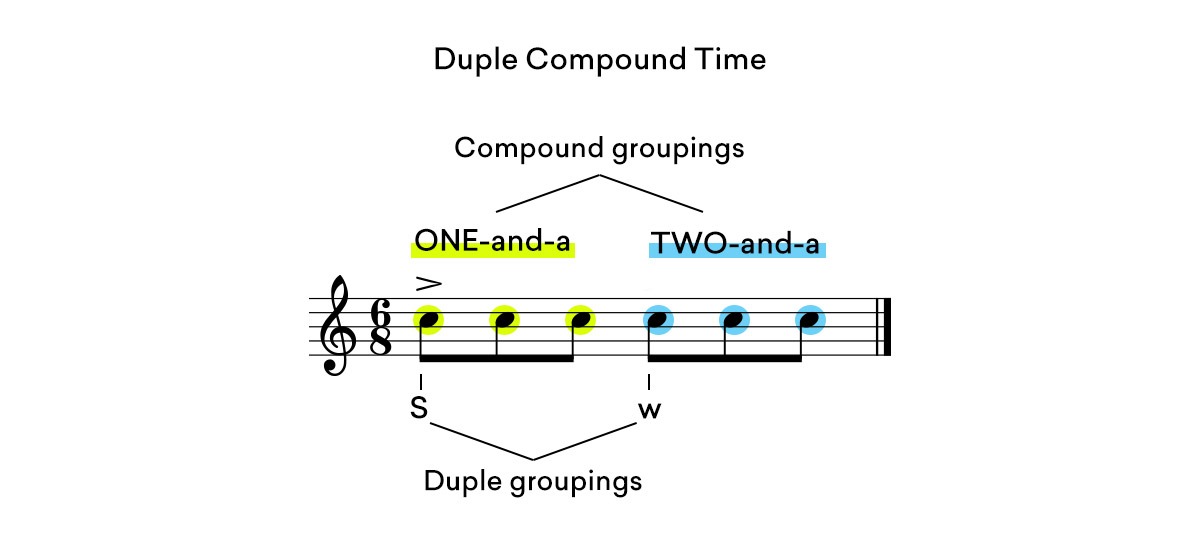In this article, we’ll explain what a backbeat is, why it’s so vital, and how to use backbeat in your own playing and music productions.
What’s the backbeat?
In music, the backbeat is a beat that’s played on the second and fourth beats in 4/4 time. In nearly all cases this beat is played on the snare drum or with a clap.
The backbeat creates a powerful, snapping pulse that aligns the band on where exactly the two and four—and by consequence, the one and three.
Who plays the backbeat?
Playing the backbeat is nearly entirely the job of the drummer—after all, aside from clapping, the instrument that plays it in nearly all music is either the snare drum or the hi-hat.
Meaning the drummer has to pay close attention to the band’s rhythm and play “within the pocket”, that backbeat needs to line up with what the bass is playing together with the rest of the association.
It’s properly understood in drumming circles that when the backbeat falls out of time or will get “flipped” to the one and three—the music might be at risk of falling apart.
So in case you’re a drummer, you should practice playing and hearing the backbeat. Ensuring it stays in time with the music’s rhythm.
A quick rhythm theory lesson
By way of notation and sound, the backbeat is comparatively easy to read and understand.
Right here’s what a primary rhythm with a backbeat looks like in music notation.
How backbeats work in 6/8
Where does the backbeat fall for music written in numerous time signatures like 6/8?
The short answer is that in 6/8 the backbeat falls on the fourth count—that is where you’ll hear the snare.
Right here’s how that appears in music notation.
If you would like a deeper explanation of why you’ll need to brush up in your rhythm theory—however, in short, a bar of music will include strong and weak beats that alternate.
In classical music theory, strong and weak beats are used to elucidate duple and triple time.
Duples are groups of two notes—strong-weak, whereas triples are groups of three notes strong-weak-weak.
For instance, 4/4 time is a duple meter time signature with two groups of duples resulting in a strong-weak-strong-weak pattern.
However, in 6/8, which is a duple compound time signature you’ll hear a strong-weak-weak strong-weak-weak pattern within every triple group.
However, you’ll additionally hear a duple strong-weak pattern between the two groups of triples.
That’s why rhythms with a backbeat cut back the 6/8 time signature to a duple meter.
If that doesn’t make sense don’t worry, it’s primarily the reason behind why music is written in 3/4 and odd time doesn’t really have backbeats.
Back the beat
All this talk about strong and weak beats is a bit confusing. Let’s take a look at why the backbeat is so particular and how one can play around with it.
You could be wondering why would the backbeats. That is so essential, falls on what classical music theory calls the weak beat?
Properly, I’d argue that that’s what makes the backbeats so fascinating.
It breaks the rules of western music theory by including this off-kilter assist to the rhythm and by placing a ton of emphasis on the drums within the sorts of music that use the backbeat.
When you’ve ever checked out classical music, there’s not a lot out there that includes a snare drum slamming on the 2 and 4.
That’s because backbeats-based rhythms are rooted within the early days of blues and jazz that got here out of the southern United States—genres that broke all the rules of classical music.
But that’s what makes the backbeats so fascinating. It’s groovy, we immediately recognize it. It makes individuals nod their heads. You possibly can play around with it to get different sorts of feelings.
It’s mind-blowing really, that probably the one frequent musical function between all pop, rock, EDM, hip-hop, … all is that they all constantly feature a backbeat.
The backbeat doesn’t should be rigid either, it creates tons of room for experimentation.
So learn to recognize and respect the backbeat in your playing and in your beats.
And never stop listening to the good artists from years past that worked hard to hone their feel and pioneer their own sound.





